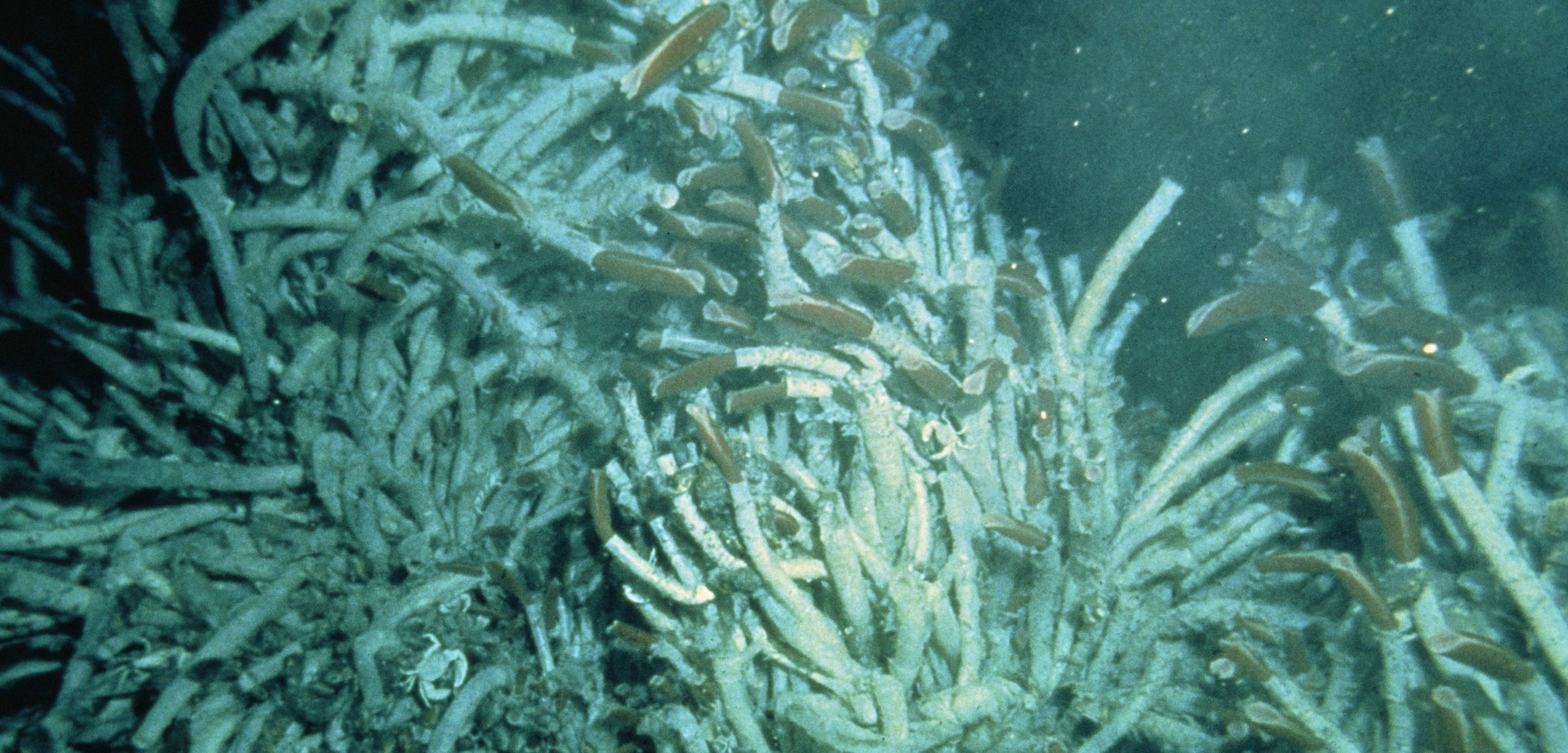An Epic Migration along the Bottom of the Sea
The creatures that dwell on deep-sea hydrothermal vents have only a tenuous connection to life on other vents.
Article body copy
On the bottom of the western Pacific Ocean, in Japan’s Okinawa Trough, the seafloor is a volcanic vision of wriggling tube worms, scurrying shrimp, and see-through specks of plankton flitting against a backdrop of stalagmite-like chimneys.
Deep-sea hydrothermal vents like this one were first discovered in the late 1970s, and ever since, scientists have been struggling to understand how such vibrant ecosystems can exist in these seemingly inhospitable places.
Over the years, researchers have shown how the animals grow on the heat, minerals, metals, and gases that flow out of the vents from deep within the Earth. Yet neighboring vents can be tens to hundreds of kilometers away and in between the water is cold, dark, and largely empty. That life exists on one vent is surprising, but that whole communities of organisms span multiple vents, is astonishing.
In a new study, scientists have demonstrated that by riding deep-sea currents, larvae should be able to travel between vent sites. The research is a theoretical assessment of how larvae would move throughout Japan’s Okinawa Trough and the broader western Pacific, relying on oceanographic modeling, larval simulations, and drifter experiments.
The research team, led by Satoshi Mitarai from the Okinawa Institute of Science and Technology, found that hydrothermal vents within Okinawa Trough are well connected by deep-ocean circulation, meaning larvae should be able to easily move between vents.
Not surprisingly, the researchers also showed that larval migration to distant hydrothermal vents should occur less frequently and with strong directionality. In the rare cases where deep-sea organisms have managed to spread across oceans, biologists now have a detailed map as to how they likely got there, says Mitarai.
Whether or not larvae can travel between vent sites is a question that “has been waiting for an answer for a long time,” says Les Watling, a deep-ocean biologist at the University of Hawai‘i who was not involved in the new study. “These results explain the ‘provinciality’ we see in vent faunas around the world.”
Mitarai and his colleagues’ model demonstrates the tenuous connectivity between hydrothermal vent ecosystems, a finding of particular relevance to the nascent deep-sea mining industry, the study points out.
One assumption guiding the development of the planned Solwara 1 deep-sea mining project is that hydrothermal vent ecosystems affected by mining will be able to restock themselves from nearby reserves. Solwara 1 is the world’s first deep-sea mining project, and it is set to open in the Manus Basin off Papua New Guinea in 2018. (To date, the International Seabed Authority has granted more than two dozen deep-sea mining exploration contracts, at least four of which are in the western Pacific.)
To a degree, Mitarai’s study seems to support the mining industry’s assumption: the Manus Basin shares important geologic features with the Okinawa Trough that would seem to encourage vent ecosystem connectivity. Both locations are back-arc basins, geologic features formed, in some cases, where one tectonic plate subducts beneath the other. As opposed to mid-ocean ridges, which are like underwater mountains with complex topology and stronger currents, back-arc basins are depressions in the seafloor in which vent species are largely contained.
At the same time, the research shows that some vent sites appear to be sources for recolonization, or stepping stones where larvae can resettle before riding the prevailing current to a farther-flung locale. If mining disrupts the wrong vent ecosystems, this connectivity could be destroyed.
Mitarai says he doesn’t want the study to be viewed as a green light for mining. “We should be doing these model predictions and testing them using population genetics before we seriously start deep-ocean mining,” he says.

